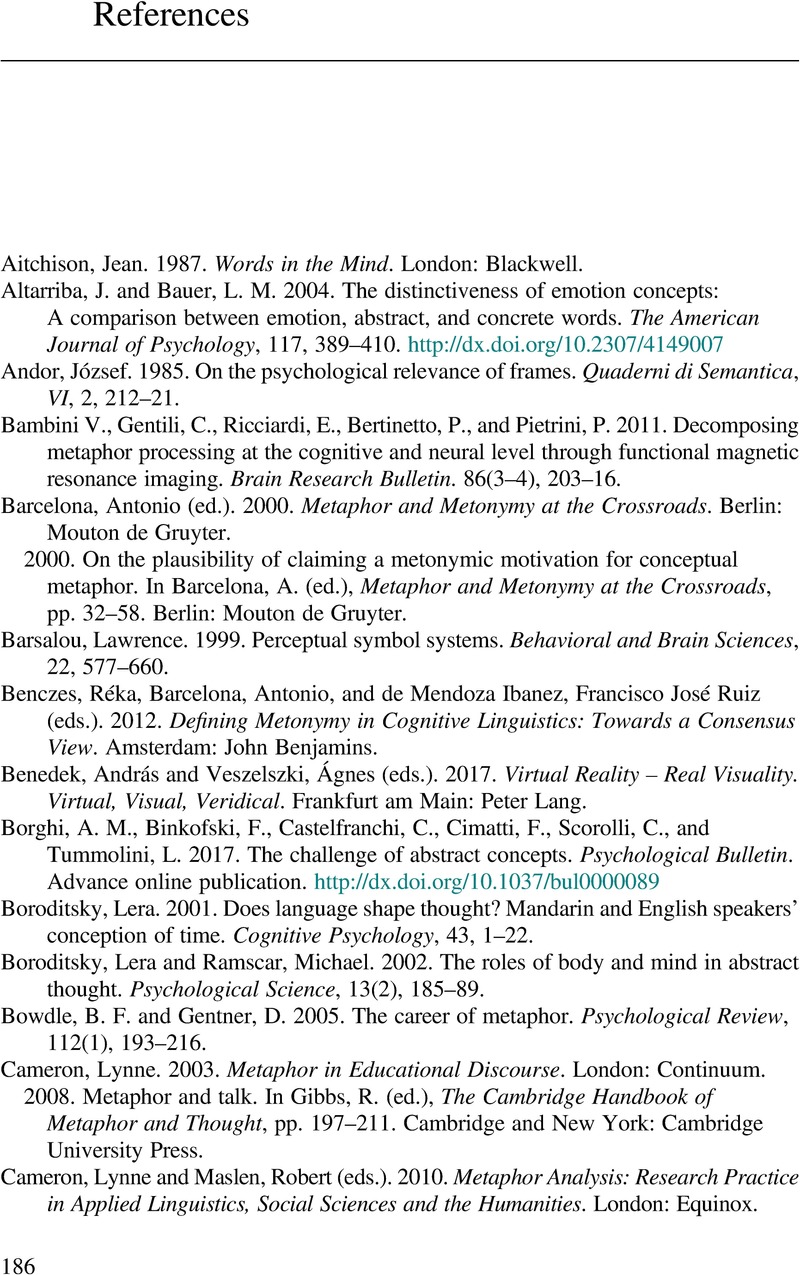Book contents
- Extended Conceptual Metaphor Theory
- Extended Conceptual Metaphor Theory
- Copyright page
- Dedication
- Contents
- Figures
- Tables
- Preface
- 1 A Brief Outline of “Standard” Conceptual Metaphor Theory and Some Outstanding Issues
- 2 The Abstract Understood Figuratively, the Concrete Understood Literally, but the Concrete Understood Figuratively?
- 3 Direct or Indirect Emergence?
- 4 Domains, Schemas, Frames, or Spaces?
- 5 Conceptual or Contextual?
- 6 Offline or Online?
- 7 The Shape of the Extended View of CMT
- 8 By Way of Conclusion: Responses to the Five Questions
- References
- Index
- References
References
Published online by Cambridge University Press: 02 April 2020
- Extended Conceptual Metaphor Theory
- Extended Conceptual Metaphor Theory
- Copyright page
- Dedication
- Contents
- Figures
- Tables
- Preface
- 1 A Brief Outline of “Standard” Conceptual Metaphor Theory and Some Outstanding Issues
- 2 The Abstract Understood Figuratively, the Concrete Understood Literally, but the Concrete Understood Figuratively?
- 3 Direct or Indirect Emergence?
- 4 Domains, Schemas, Frames, or Spaces?
- 5 Conceptual or Contextual?
- 6 Offline or Online?
- 7 The Shape of the Extended View of CMT
- 8 By Way of Conclusion: Responses to the Five Questions
- References
- Index
- References
Summary

- Type
- Chapter
- Information
- Extended Conceptual Metaphor Theory , pp. 186 - 193Publisher: Cambridge University PressPrint publication year: 2020



